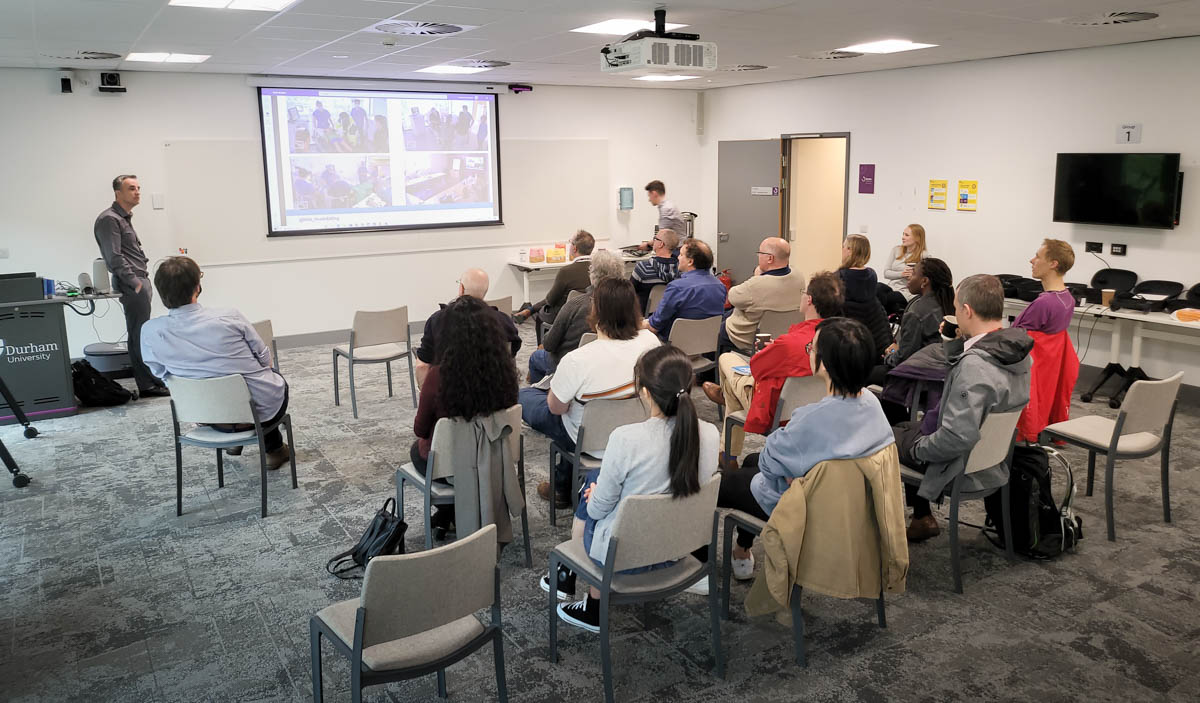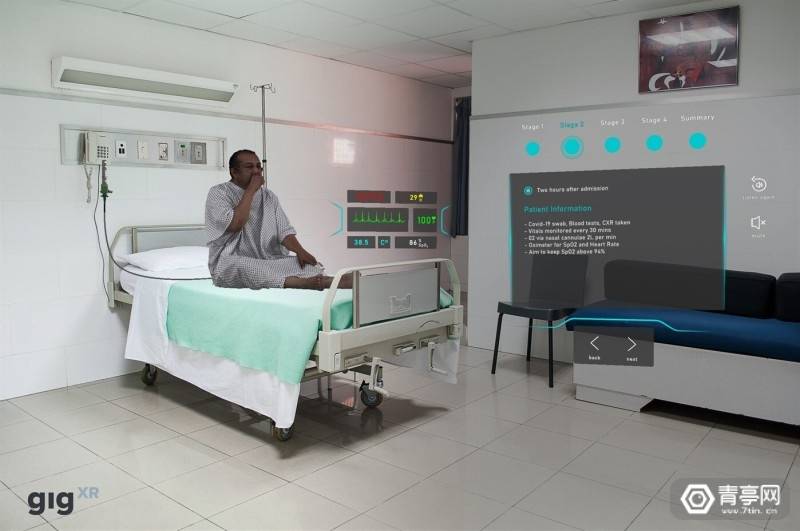DCAD and the Physics Education Group host a joint HoloLens Demo
On the 6th May, DCAD hosted an Augmented Reality (AR) event which gave Durham University staff the opportunity to get hands-on experience of using the Microsoft HoloLens. Organised by Dr Pippa Petts of the Physics Education Group, the event brought together over 30 members of staff from all four Faculties for an afternoon of talks, tech, and trays full of cakes.

The session was led by Craig Dores from Bishop Auckland Hospital’s Clinical Simulation Centre, who gave staff an insight into how the NHS is using AR technologies. Using devices like the Microsoft HoloLens, coupled with a training ward, the NHS are able to train medical students on how to give effective patient care in safe, high-quality, simulated environments.
Following on from the session introduction, three demo stations were on offer to give staff the chance to try out some of the HoloLens applications for themselves. The first station was facilitated by Charlie Atkinson of Health Education England who demonstrated HoloHuman, the world’s first 3D human anatomy atlas that uses full-size, immersive holograms to allow people to explore regions of the body. The skeleton came under close scrutiny from Dr Trudi Buck from the Department of Anthropology.

The second, hosted by John Stratford from Northumbria’s Dinwoodie Assessment and Simulation Hub (DASH), used HoloPatient, an app that helps students assess, diagnose, and treat real-world conditions through true-to-life holographic simulations of standardised patient scenarios. This application focussed on the softer skills of clinical practice, where users interact with hologram subjects to help surface illnesses that are not immediately apparent.

The final station offered staff something a little different. An online meeting and collaboration platform called JoinXR designed for engineering and data-intensive applications. In this demo, Durham staff were greeted by JoinXR co-founder Mark Knowles-Lee in an online meeting environment. To demonstrate the capabilities of AR collaboration, Mark was able to project a full-scale Formula 1 car into Teaching and Learning Centre, where staff adopted the role of pit crew, working together to change the wheels on an F1 car.

This event is connected to a DCAD Collaborative Innovation Grant led by Dr Pippa Petts and supported by Ross Parker, which will be used to develop a set of augmented reality (AR) learning materials to aid first year physics students in advancing their conceptual understanding of key topics. Visit our SharePoint site to find out more about the DCAD Collaborative Innovation Grants and how you can apply. You can also contact your DCAD Digital Education Consultant for an informal chat about any ideas you may have.
